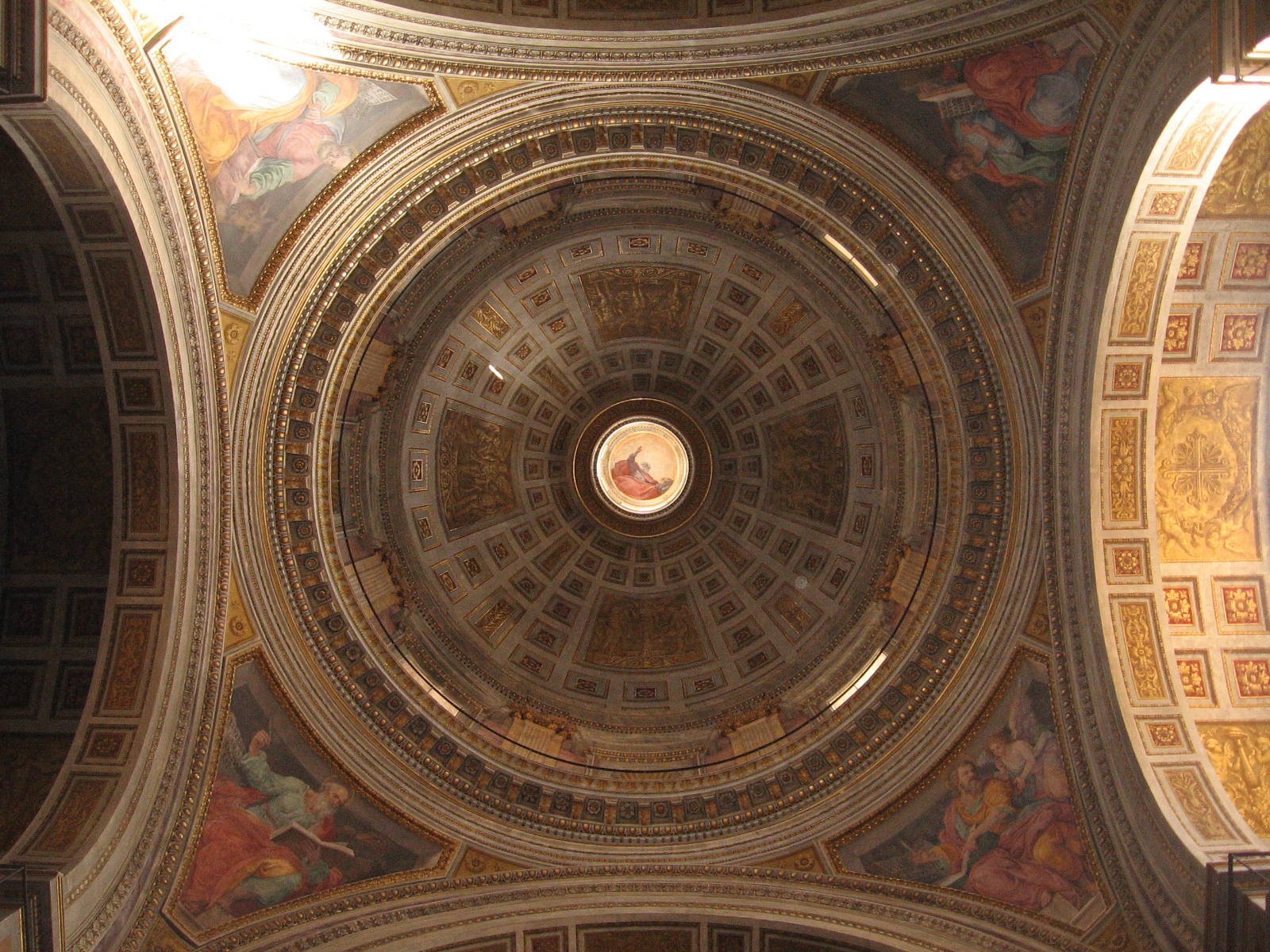Ssma Trinità dei Pellegrini is a lovely church, and, being a pilgrim and a Traddie, I feel it is my church in Rome: it owes its foundation to St Philip Neri too.
Last night, I found the Mass was a Requiem, marking the anniversary of some deceased fellow: Requiescat in pace. But there was music, and such music! An organist was playing some great music before Mass, and continued during the prayers at the foot of the altar. Come the Sequence, a strong and talented tenor sang out the thrilling chant of Dies Irae; and at the Offertory, he sang a rather Baroque motet accompanied by the organ. The organ played again - after the Elevation of the chalice! During communion, there was another accompanied solo motet, and after Mass ended, to my utter stupefaction, the soloist sang the Salve Regina, accompanied by organ, in what I recognized was a setting by Marc-Antoine Charpentier.
This was a very grand Roman affair, a Low Mass accompanied by sacred music, the organ being more shall we say Counter-Reformation in style, while the motets were Baroque. I don't wish to appear unkind, but it was, however, quite contra rubricas, since at a Requiem the organ may at most play only to help sustain the chant.
Gazing toward the high altar, one is captivated by the altarpiece, the original needless to say, a huge painting of the Holy Trinity by Guido Reni. High above is written Deo Trino Uni (To God the Three and One), and high, high, exceedingly high up, in the lantern of the dome, is a painting of God the Father Almighty blessing us from on high. You have to crane your neck back till it hurts to see it. What a sight - Pater noster, qui es in caelis...

Last night, I found the Mass was a Requiem, marking the anniversary of some deceased fellow: Requiescat in pace. But there was music, and such music! An organist was playing some great music before Mass, and continued during the prayers at the foot of the altar. Come the Sequence, a strong and talented tenor sang out the thrilling chant of Dies Irae; and at the Offertory, he sang a rather Baroque motet accompanied by the organ. The organ played again - after the Elevation of the chalice! During communion, there was another accompanied solo motet, and after Mass ended, to my utter stupefaction, the soloist sang the Salve Regina, accompanied by organ, in what I recognized was a setting by Marc-Antoine Charpentier.
This was a very grand Roman affair, a Low Mass accompanied by sacred music, the organ being more shall we say Counter-Reformation in style, while the motets were Baroque. I don't wish to appear unkind, but it was, however, quite contra rubricas, since at a Requiem the organ may at most play only to help sustain the chant.
Gazing toward the high altar, one is captivated by the altarpiece, the original needless to say, a huge painting of the Holy Trinity by Guido Reni. High above is written Deo Trino Uni (To God the Three and One), and high, high, exceedingly high up, in the lantern of the dome, is a painting of God the Father Almighty blessing us from on high. You have to crane your neck back till it hurts to see it. What a sight - Pater noster, qui es in caelis...

Benedictione perpetua benedicat nos Pater aeternus. Amen.
Wow!








2 comments:
Ah, the Romans. They have their own way of doing everything. And afterall, wouldn't you want to have tremendous music at your Requiem?
Frankly, it was utterly grand and superb - more, please!
Of course, I would want:
1. A Pontifical Mass of Requiem;
2. Even more grand music, such as Charpentier's own Dies Irae,
3. A Baroque catafalque at least ten foot high, displaying my coat of arms atop a pile of symbolical vanities mingled with bones laid over black velvet,
4. To be let out of Purgatory so as to attend "in person".
(Of course, as Aquinas notes, "my soul is not I", so I wouldn't be there in person strictly speaking...)
Post a Comment